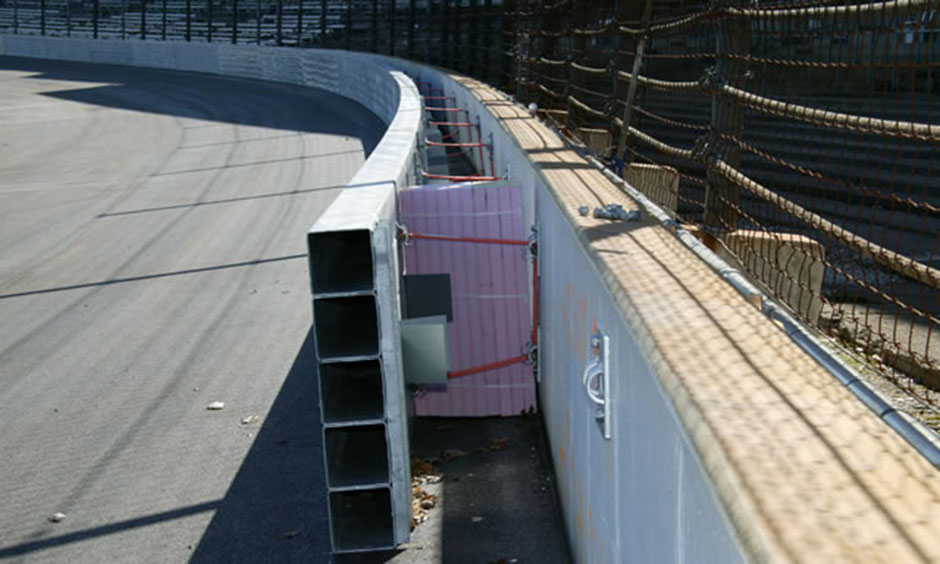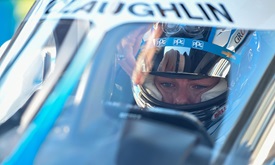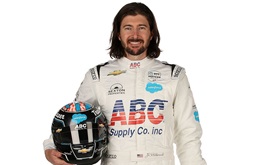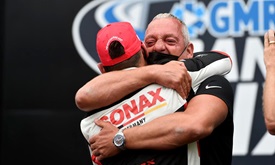Owens Corning Foam Helps SAFER Barrier Protect Drivers
MAY 18, 2021
The energy-absorbing Steel and Foam Energy Reduction (SAFER) Barrier has been protecting race car drivers since it was first installed at Indianapolis Motor Speedway in May 2002.
The foam used in the barrier is manufactured by Owens Corning, a company based in Toledo, Ohio, known to consumers for roofing, insulation and composite materials – and, of course, The Pink Panther™ in its marketing campaigns. FOAMULAR® is the brand name of the extruded polystyrene (XPS) foam that Owens Corning produces, and it can be found at local home improvement stores like The Home Depot and Menards.
Owens Corning considers itself a silent partner in the sport’s continual drive to maximize safety. Its FOAMULAR® material is used as a shock absorber to dissipate energy on impact. The more energy dissipated, the better chance injuries can be avoided or lessened. It’s a natural extension to the company’s safety culture, for which Owens Corning has been nationally recognized for its continued commitment to improving safety in the workplace and beyond.
John Budinscak, Owens Corning FOAMULAR® product and program leader, appreciates the company’s role in the sport each time the SAFER Barrier is struck.
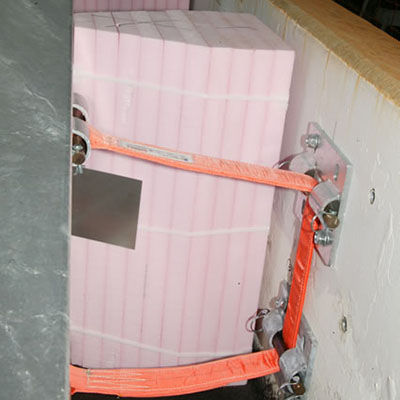 “There are a lot of safety elements contributing to the SAFER Barrier’s effectiveness, but I’m thankful every day that we can be part of bettering the sport,” he said. “I watch video clips of what I’ll call ‘those instances’ and marvel at its effectiveness.”
“There are a lot of safety elements contributing to the SAFER Barrier’s effectiveness, but I’m thankful every day that we can be part of bettering the sport,” he said. “I watch video clips of what I’ll call ‘those instances’ and marvel at its effectiveness.”
The SAFER Barrier was created two decades ago by INDYCAR through the Midwest Roadside Safety Facility (MWRS), part of the University of Nebraska-Lincoln. Engineers there examined and tested nearly 100 energy-absorbing materials before deciding Owens Corning® FOAMULAR® worked the best.
Owens Corning worked with the MWRS to optimize the material for the SAFER Barrier application. The final version met all the impact criteria required by the MWRS for the application. And yes, the material comes in pink.
It didn’t take long for the SAFER Barrier and its components to be put to the test in a real-world application. On the first day of Indianapolis 500 practice in May 2002, INDYCAR SERIES driver Robby McGehee spun into the Turn 3 wall, hitting the barrier with a force unlike anything that had been simulated during SAFER Barrier tests on the tarmac of Lincoln Municipal Airport, adjacent to the MWRS.
“I can assure you that I’m very glad it was there,” McGehee said.
Today, every oval track staging INDYCAR and NASCAR races – and some road courses – have the SAFER Barrier in place, and some European tracks are beginning to follow suit. Owens Corning is in its third iteration of the XPS foam, this one known as FOAMULAR® NGX™, which is more environmentally friendly, with an emissions reduction the equivalent of taking a passenger car off the road for an entire year for every SAFER block used.
The SAFER Barrier is constructed utilizing blocks fabricated from multiple Owens Corning boards. The boards are cut to size and then sealed together to form tapered blocks, which are 40 inches tall and 22 inches deep. A single track uses anywhere between 500 and 1,000 blocks.
Because polystyrene, which is used in Owens Corning’s material, is subject to degradation from continued exposure to sunlight, company officials recommend tracks paint the blocks to protect them. The downside? The paint masks the trademark pink color of the FOAMULAR® XPS.
“Fans don’t know what’s behind the barrier because they never see it, so they don’t know what the material is,” Budinscak said. “So, product recognition is disguised, leaving people to wonder who provides the ‘F’ in ‘SAFER.’”
The “F” comes from Owens Corning, even if most people don’t realize it.
“Internally, I can assure you we are very proud of it,” Budinscak said. “We talk about it regularly as an example of how our work goes beyond manufacturing building materials.”
The color PINK is a registered trademark of Owens Corning. © 2021 Owens Corning. All Rights Reserved.










